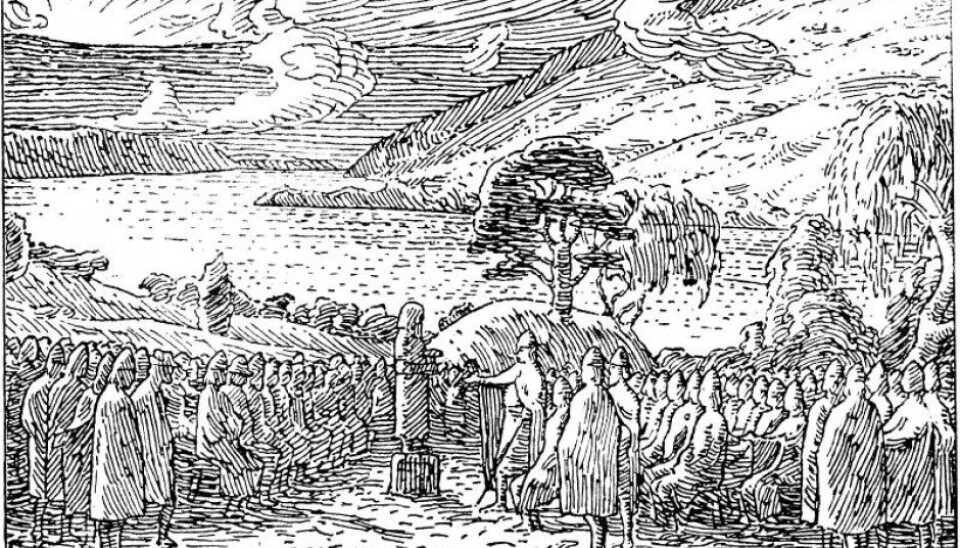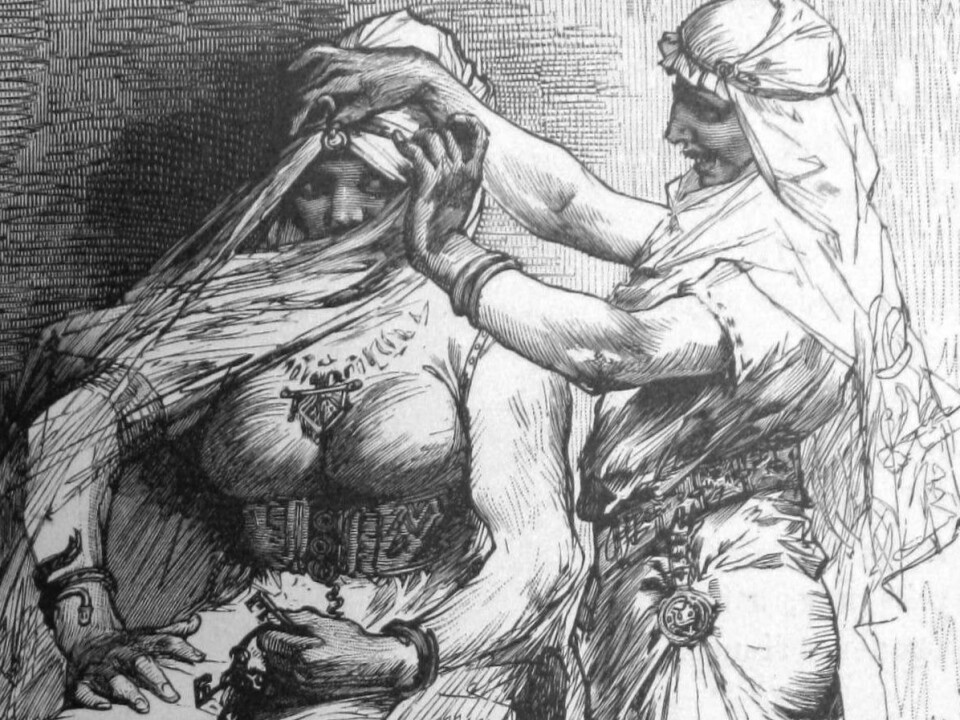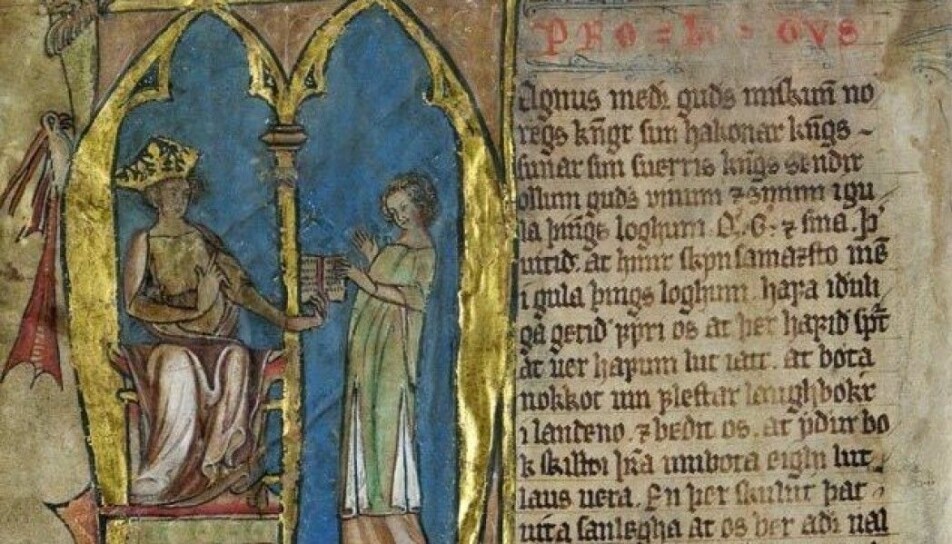
’Twas dangerous to insult a Viking
You had to watch your tongue during the Viking era. Insulting someone could get you killed on the spot. But could you get away with murder?
The Viking sense of justice was quite different from the one we have today – and it could be bloody.
Although it’s easy to imagine the Vikings as a bunch of scruffy barbarians who murdered, raped and looted without any conscience, they actually had a complicated honour and justice system.
Punishments could be severe, but the Viking legal system was based on a legislative assembly and a court.
The Germanic Thing
"A Thing" was a governing assembly in Germanic society that was typically held in a specially designated place. The Thing made political decisions, legislated and tried murder cases, a common problem in the Viking Age. The word lives on in several Scandinavian names for Parliament, such as Norway’s Stortinget and Iceland’s Alþing, as well as in place names like Tingwall in Orkney and Shetland.
People could be sentenced to death or be made outlaws by a judgment at the Thing. Being subjected to outlawry meant that you were banished from society and anyone could kill you, with no consequences.
People commonly settled disputes among themselves by paying fines, or through the holmgang—a duel between two men, often over women or property.
So what was regarded as a crime in the Viking Age? How was it decided what kind of punishment would be meted out?

Thinking like a Viking
Understanding the legal system requires thinking like a Viking from Scandinavia. Taking responsibility for one’s own actions was considered paramount.
If you did something wrong, you had to admit to the deed. Then you could defend yourself at the Thing, which was the honourable way to handle it.
Theft was therefore a particularly heinous crime, since the point of stealing something is to hide one’s action.
Keith Ruiter is a PhD candidate at the University of Aberdeen and has researched Viking punishments. He points to a theft in the Icelandic Grettir’s saga. Grettir is a poet who is a convicted outlaw in Iceland, and he must fend for himself in the wilderness for 20 years. He ends up stealing sheep from farmers, explains Ruiter, but is discovered.
Then the farmers “raised the gallows and were ready to hang him on the spot,” says Ruiter.
Fortunately for Grettir, he is spared the noose thanks to the arrival of the wise and firm woman Thorbjorg, who saves him.
“References to hanging are rare, but it seems to have been a particularly shameful way to be executed,” says Ruiter.
Beheading was another frequently used means of execution. Many Viking slaves may have ended their days in this way.

What about murder?
You could get away with killing someone, but only as long as you were honest about it.
“Today we distinguish between premeditated murder, intentional murder and manslaughter, but the Vikings didn’t have the same distinctions,” Anne Irene Riisøy tells forskning.no.
Riisøy is an Asssociate Professor at the University College of Southeast Norway (USN) who has previously focused on Norwegian legislation and case law in medieval and early modern times. Now she is researching law and justice in the Viking Age.
“For example, arson or killing someone at night was seen as highly despicable and therefore classified as murder because you weren’t giving people the opportunity to defend themselves,” Riisøy says.
But Vikings did distinguish between manslaughter and murder. You could kill someone in public without suffering serious consequences, because you were doing it openly and giving others the opportunity to react to it, she says.
You had to take responsibility for the killing and not flee, and pay the compensation imposed on you. The same applied to homicides resulting from fights or similar situations.
“As long as you were honest and open, and reported what had happened, it wasn’t considered murder,” says Ruiter.
Revenge
Vikings were also expected to take revenge. This is described in the older Gulating Law Code, which was likely written in the 1000s and is the oldest known body of laws in the Nordic countries.
If someone did you an injustice, such as violence or insults, you could request financial compensation. However, “if you didn’t avenge yourself, you couldn’t ask for compensation for more than three cases,” says Riisøy.
It was expected that you would take matters into your own hands if someone did you wrong. If you didn’t, you lost the possibility for further financial compensation.
Watch your tongue
And revenge could come immediately. Some types of insults were particularly deadly.
Riisøy relates a famous example from Iceland in the 980s, which is described in the Icelandic Landnámabók, or “Book of Settlement,” among others.
The German missionary Friedrich travelled to Iceland with Thorvald Konradsson, an early Icelandic Christian. On the way they met two men who gave Thorvald a bloody insult:
The Bishop (Friedrich) has borne nine children, Thorvald was the father of all of them.
Thorvald killed both men at once, and although he was not executed for this, he was banished from Iceland.
Accusing another man of cowardice, for example, could also trigger a duel. You can see more examples of Viking-era insults on Wikipedia.
Honesty
Openness about one’s deeds underscored the importance of honesty.
The legal system was dependent on people being honest when they claimed their innocence at the Thing or in other contexts.
The Vikings had quite a solid legal process in this area, which we still recognize today.
“It was very important to swear an oath to show that you spoke the truth and would honour an agreement. These oaths were often sworn on objects such as boats, swords or special rings,” says Riisøy.
Oaths were also used to seal peace agreements or just to agree on an issue.
According to Riisøy, oaths such as, "If I lie now, I shall be afraid of Odin and Thor" were thought to invoke the gods.
“Some people probably believed that the oaths would get the sword to slay the guilty party,” she says. The oath offered a type of security.
If people broke an oath, they were viewed as dishonest.
“You’d run into big problems when you tried to enter into new agreements. No one trusted you if you were known as a oath breaker,” Riisøy says.
Poetry, gods and laws
But where does our knowledge of Viking laws come from?
Most of it comes from early medieval laws that were written down after the Viking era, like the Gulating Law Code. The Vikings did not write down their laws themselves, but researchers believe that parts of these laws are far older than the manuscripts, which date from the 13th and 14th centuries.
Many laws and regulations also shine through in the Poetic Edda, a collection of poems which were probably written down at the end of the 1200s. The poems include stories of the gods in Norse mythology, as told from one person to another for several centuries before being transcribed. One of these is the well-known story of the giant Thrym, who stole Thor's hammer to extort the gods to give him Freyja in marriage.
“The poems are full of legal episodes. The Norse gods swear oaths and call parliamentary gatherings,” says Riisøy. “These poems were probably ones that the whole population knew, and they were familiar and beloved stories. They no doubt functioned as teachings for people on how to live and relate to society,” she adds.
Riisøy has been researching legal references in the Edda and is now working to turn her research project into a book about jurisprudence in the Eddic poems.
———
Read the Norwegian version of this article at forskning.no
































